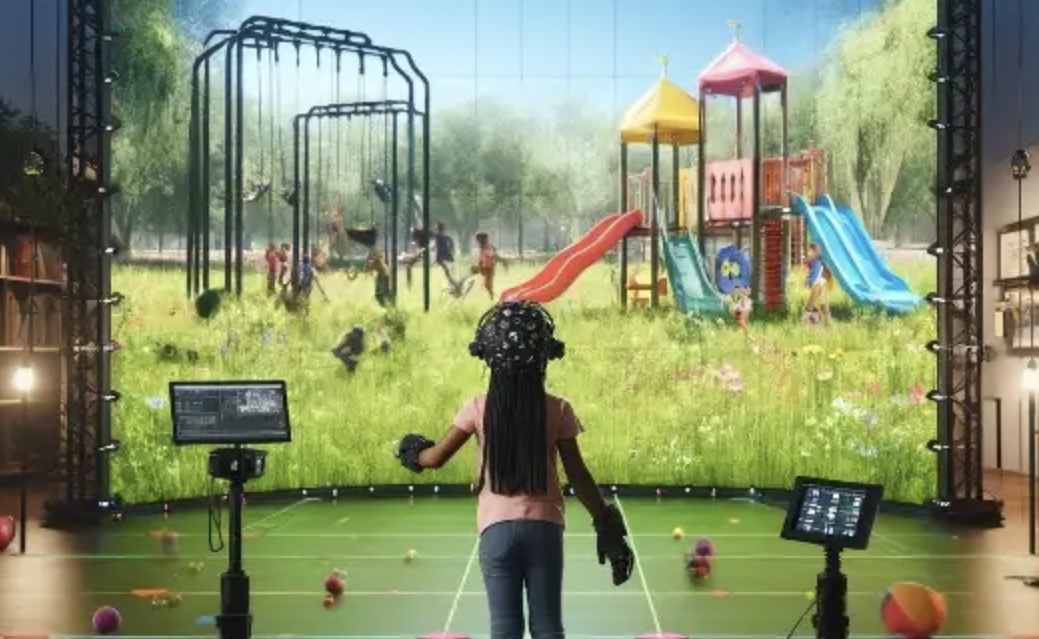Immersive VR Cave
 The project is designed to create an immersive environment for testing sensory development in children from birth until young adulthood. The environment will be a cave that will allow high resolution video projection via four 4k projectors, spatial audio via an ambisonics array of 25 speakers, and tactile and haptic stimulus delivery via a series of custom designed devices. In addition, the room is outfitted with an Optitrack motion tracking system, allowing high fidelity capture of body position. Finally, the room will be equipped with a 128-channel EEG system for the acquisition of brain activity. Projects in the environment will focus on how children’s responses to sensory stimuli change during development.
The project is designed to create an immersive environment for testing sensory development in children from birth until young adulthood. The environment will be a cave that will allow high resolution video projection via four 4k projectors, spatial audio via an ambisonics array of 25 speakers, and tactile and haptic stimulus delivery via a series of custom designed devices. In addition, the room is outfitted with an Optitrack motion tracking system, allowing high fidelity capture of body position. Finally, the room will be equipped with a 128-channel EEG system for the acquisition of brain activity. Projects in the environment will focus on how children’s responses to sensory stimuli change during development.
https://lab.vanderbilt.edu/meld/
How to Get Involved:
When not in use for the core funded project, the environment can be used by others to address questions of interest as they relate to the use (and programming) of immersive environments.
VR Cave PI
VR Cave Personnel
Core Publications
Wallace, M. T., Woynaroski, T. G., & Stevenson, R. A. (2020). Multisensory Integration as a Window into Orderly and Disrupted Cognition and Communication. Annual review of psychology, 71, 193–219.
Tovar, D. A., Murray, M. M., & Wallace, M. T. (2020). Selective Enhancement of Object Representations through Multisensory Integration. The Journal of neuroscience : the official journal of the Society for Neuroscience, 40(29), 5604–5615.
Noel, J. P., Bertoni, T., Terrebonne, E., Pellencin, E., Herbelin, B., Cascio, C., Blanke, O., Magosso, E., Wallace, M. T., & Serino, A. (2020). Rapid Recalibration of Peri-Personal Space: Psychophysical, Electrophysiological, and Neural Network Modeling Evidence. Cerebral cortex (New York, N.Y. : 1991), 30(9), 5088–5106.
Funding Sources






